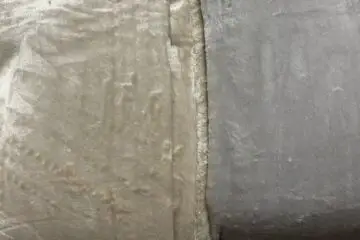The evolution of architectural design and construction is propelled by a continuum of transformative innovations and progressive trends that redefine the ethos of structural elements within the built environment. This insightful blog post elucidates the dynamic landscape of innovations and trends in structural elements, illuminating the paradigmatic shift towards sustainable materials, parametric design strategies, and pioneering construction technologies that herald a new era of architectural ingenuity and structural aesthetics.
Innovations and Trends in Structural Elements
Sustainable Materiality and Ecological Consciousness
The proliferation of sustainable materiality stands as a pivotal cornerstone in redefining the architectural ethos of structural elements, championing an ecological conscientiousness that embraces biophilic design, recycled materials, and carbon-neutral fabrication processes. From engineered timber to bio-based composites, architects and engineers are leveraging sustainable materials to imbue structural elements with regenerative resilience, fostering a symbiotic rapport between architectural form and environmental stewardship that transcends conventional paradigms of constructional materiality.
Parametric Design and Computational Morphologies
The advent of parametric design and computational morphologies signifies a seminal shift in the conceptualization and articulation of structural elements, engendering an era of algorithmic form-finding and digitally-driven articulation that expands the frontiers of architectural expression. By harnessing parametric modeling and generative algorithms, designers are crafting structurally expressive elements that resonate with fluid formalism, biomimetic geometries, and multi-scalar articulations, instilling architectural compositions with a dynamic interplay of structural integrity and formal innovation.
Pioneering Pre-Cast Stone Techniques in Salt Lake City
The architectural scene in Salt Lake City is undergoing a remarkable transformation, particularly through the adoption of pre-cast stone technologies that marry aesthetic flexibility with practical efficiency. Thoughtfully integrated within the locale’s architectural projects, pre-cast stone from Salt Lake City’s leading suppliers offers a myriad of design possibilities, while simultaneously addressing the region’s unique climatic and seismic requirements. As an exemplar of innovation, these pre-cast stone elements are meticulously crafted to honor the city’s rich historical tapestry, with custom finishes that pay homage to the area’s natural beauty, and engineered resilience that stands as a testament to contemporary construction methodologies.
Adaptive Structures and Smart Fabrication
The integration of adaptive structures and smart fabrication technologies heralds an epochal convergence of responsive architectures and agile construction methodologies, harnessing the potential of kinetic frameworks, deployable systems, and 3D-printed components to engender a paradigm of responsive structural elements.
From deployable canopies to shape-shifting facades, adaptive structures epitomize an era of structural dynamism, affording buildings with the capacity to dynamically respond to environmental cues, user interactions, and programmatic exigencies, thereby redefining the spatial versatility and functional adaptability of architectural environments.
Resilient Infrastructural Systems and Seismic Mitigation
In the realm of structural engineering, the advancement of resilient infrastructural systems and seismic mitigation strategies stands as an imperative pursuit in fortifying architectural elements against the vagaries of natural calamities and environmental perturbations. Through innovative seismic base isolation systems, energy-dissipating dampers, and multi-hazard-resistant materials, engineers are implementing strategies to enhance the structural robustness and disaster resilience of architectural elements, imbuing edifices with a fortified resilience that ensures occupant safety and structural longevity.
Bioclimatic Integration and Passive Design Strategies
The integration of bioclimatic design principles and passive architectural strategies epitomizes a holistic approach towards infusing structural elements with a climatically responsive ethos, fostering a harmonious synergy between environmental performance and architectural functionality.
By integrating passive solar design, natural ventilation strategies, and responsive building skins, architects are engineering structural elements that embrace a regime of energy efficiency, thermal comfort, and climatic responsiveness, redefining the architectural vernacular through an ethos of bioclimatic integration and passive sustainability.
Digital Fabrication and Additive Manufacturing
The advent of digital fabrication and additive manufacturing techniques engenders a transformative trajectory in sculpting structural elements, ushering in a paradigm of precision engineering, bespoke detailing, and material innovation. From robotic 3D-printed formwork to intricately articulated lattice structures, digital fabrication technologies empower architects to realize structurally expressive elements with unparalleled precision, geometric intricacy, and material efficiency, thereby redefining the frontiers of architectural ornamentation and structural typologies.
The contemporary milieu of architectural and engineering discourses espouses a kaleidoscopic panorama of innovations and trends that permeate the fabric of structural elements, propelling a renaissance of architectural expression, functional efficacy, and environmental stewardship.
By embracing the imperatives of sustainable materiality, parametric design methodologies, adaptive structures, and resilient engineering, architects and engineers are poised to redefine the ethos of structural elements, engendering a legacy of architectural ingenuity and structural aesthetics that resonate with ecological consciousness, technological innovation, and human-centric design paradigms.








